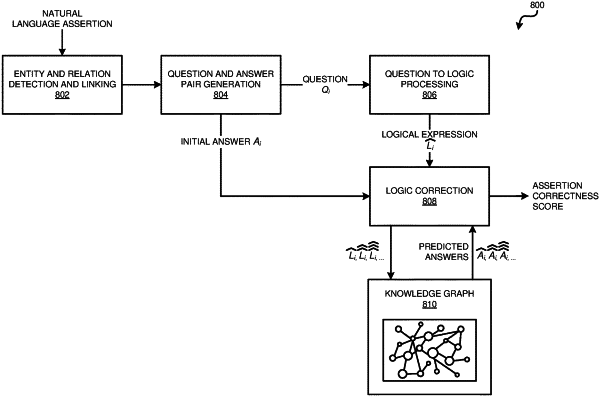| CPC G06F 16/24553 (2019.01) [G06N 5/04 (2013.01)] | 20 Claims |

|
1. A computer implemented method comprising:
decomposing a natural language assertion into a natural language question and answer pair, the natural language question and answer pair comprising an initial question and an initial answer;
translating the initial question into a structured knowledge graph query;
performing an iterative process comprising iterative querying of a knowledge graph and evaluating of corresponding query responses resulting in respective confidence scores,
wherein a first iteration of the iterative process comprises:
querying of the knowledge graph by executing, as a first predicted query, the structured knowledge graph query to retrieve a first predicted answer as a query response from the knowledge graph;
determining whether a first confidence score of the respective confidence scores meets a threshold criterion, wherein the first confidence score is indicative of a degree of similarity between the initial answer and the first predicted answer; and
altering, responsive to the first confidence score failing to meet the threshold criterion, the first predicted query based on a difference between the initial answer and the first predicted answer, wherein the altering results in an altered predicted query;
wherein subsequent iterations of the iterative process comprise querying of the knowledge graph using respective altered predicted queries; and
generating an assertion correctness score using the respective confidence scores, wherein the assertion correctness score is indicative of a degree of confidence that the assertion is factual.
|